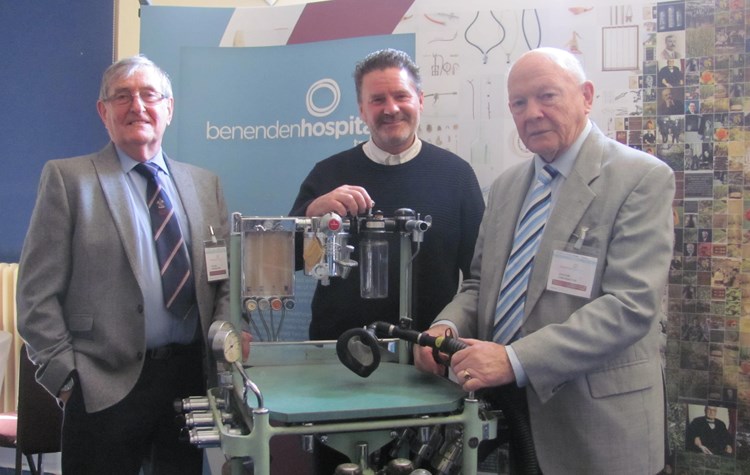Benenden Hospital has donated an old and redundant piece of medical equipment to a charity to help them deliver anaesthesia to people in need around the world.
The Hospital has given a Boyles anaesthetic machine to Safe Anaesthesia Worldwide. These machines were introduced in 1917 and used successfully for many years but have been gradually replaced by more sophisticated equipment. There are few modern hospitals which still use them but they have proved to be extremely reliable and are still widely used in developing countries throughout the world.
The Hospital had the Boyles machine in its museum, which it is currently digitalising. When approached by the charity the Hospital was happy to hand it over.
The charity, which is based in Marden, Kent, are to use the Benenden Hospital machine for research purposes. The machine is of value as it can be used without the need for electricity. It does however need a constant supply of oxygen and this is what the charity is now working on. They have a project called Solox, which aims to develop a unique solar powered system that generates and stores oxygen from atmosphere air. If successful it will ensure oxygen is always available for treating patients in poor and remote parts of the world.
The Boyles machine was given to the charity after they approached the Hospital’s Director of Business Development and Performance Denise Telford. While collecting it the Chair and Founder of the charity Roger Eltringham and trustee Colin Whittle met with one of the Theatre Operating Department Practitioners Simon Brooks to talk about how the machine can play an important part in their research.
Dr Eltringham said: “We are very grateful to Benenden Hospital for this equipment which we will use for research purposes.
There are Boyles machines in many of the countries we work in. We need to find out is if it will work with our Solox project.
“Oxygen is an essential life-saving form of therapy. It is used to treat pneumonia, the biggest cause of death of children worldwide. It is also used in the treatment of many forms of lung and heart disease, severe bleeding, emergency medicine, resuscitation and in the administration of anaesthesia. In well-resourced hospitals oxygen is readily available and piped to the bedside of every patient, but in low-resource countries oxygen supplies are limited and unreliable. As a result, millions of patients who need oxygen do not receive it, often with fatal results.
“Poorly-resourced hospitals depend on cylinders of compressed oxygen, but these are expensive and difficult to transport over poor roads, so they frequently run out. Oxygen concentrators, that produce oxygen from room air, are a cost-effective alternative; although these require an electrical supply and power cuts are common in low-resource countries.
“Most tropical countries have plenty of sunshine, making solar powered devices an attractive option.”
Denise Telford said she was pleased that Benenden Hospital was able to help.
She said: “When I heard about the work of the charity, I was astonished to think that an old piece of equipment gathering dust could do so much good. To think that it could help develop life-saving equipment used in natural disasters across the world or to treat those caught up in terrorist situations. Amazing.”
In 2016 Dr Eltringham won a Presidential Award for Service to Anaesthesiology from the World Federation of Societies of Anaesthesiologists.
His work on bringing affordable anaesthesia services to the world’s poorest countries led to the introduction of the Glostavent anaesthetic machine, an inexpensive, economical machine that can function in the absence of oxygen and electricity. The machine is now used in rural hospitals in 70 countries and a portable version is widely used by emergency services worldwide. Developing an anaesthetic machine which could operate without electricity but which could supply oxygen would increase safety margins.
Published on 29 March 2017







